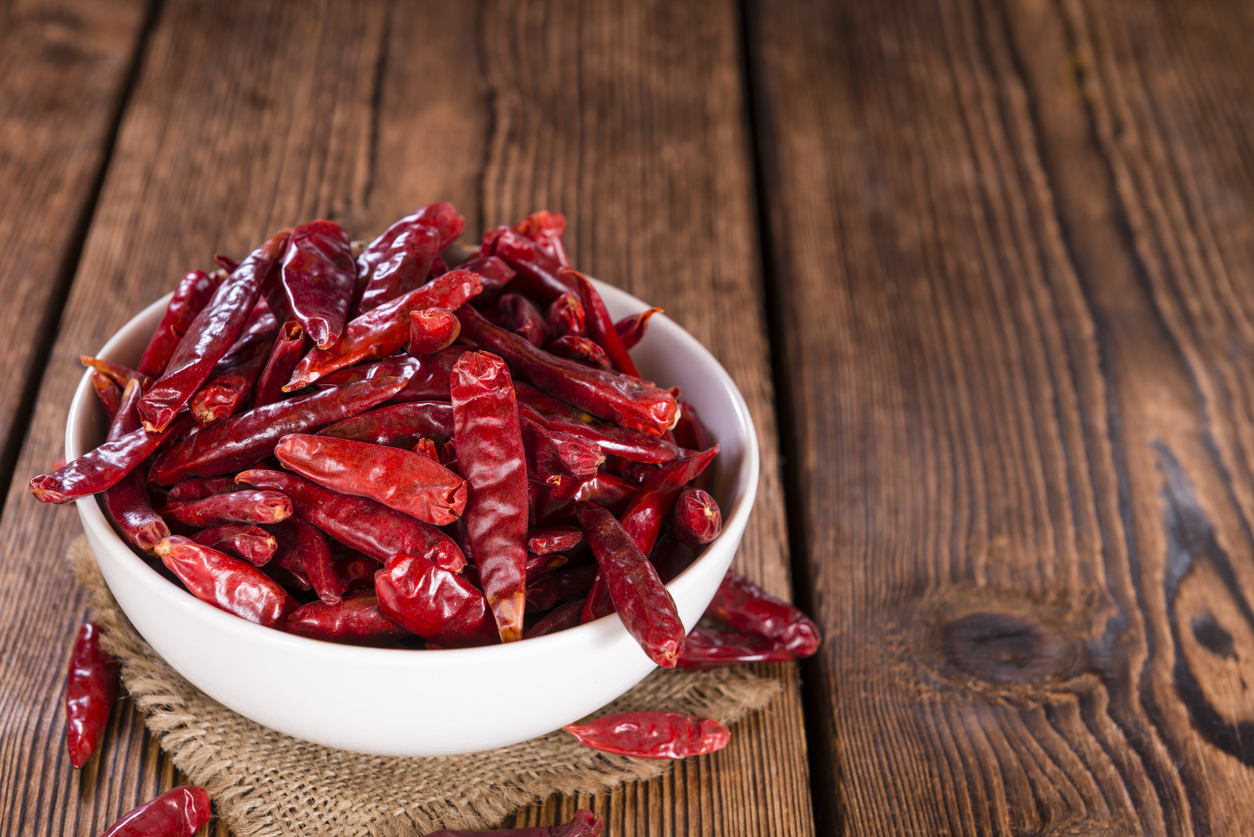-
The humble chilli has been thrown into salads, curries, stir- fries and sauces of many cultures’ cuisines for centuries, amping up the flavour and kapow of the simplest dishes. Here we take a look at why chillies cause such an explosive zing, from the tips of our tongues to the fire in our bellies, and what health benefits this may bring.
A lesson in capsaicin
Spicy foods made with chilli contain capsaicin, an interesting chemical with a few tricks. The first trick of capsaicin is to bind to a chemical receptor on the tongue known as the vanilloid receptor subtype 1 (VR1). VR1 then activates pain nerves, including the same nerves that respond to heat. VR1 tricks the brain into creating the sensation of heat pain, which depending upon the capsaicin dose can be everything from a warming tickle through to eye-watering pain.
The 10 minute rule
It remains a scientific mystery why some people seem to experience blinding pain with the merest hint of chilli, when others can chomp away quite happily on some of the most lethal varieties of pain-inducing chillies on the planet. Rest assured that it has nothing to do with pain threshold. Chilli-chompers are no more able to withstand other forms of pain, including heat, any more than their chilli-avoiding friends. Sadly there is also no clear relationship between chilli size and colour to give those most susceptible to chilli-burn an easy way out.
But the good news is that the pain passes with time and rarely lasts longer than 10 minutes. Scientific studies have shown that if you are a timid chilli eater, but afraid to make a scene, sit and wait out the full 10 minutes after that first searing next bite. This length of time de-sensitises the VR1 receptors and the pain (hopefully) will be lessened once you start eating again.
Firing up our intestinal tract
The second trick of capsaicin is that the VR1 receptors are also found throughout the entire intestinal tract, not just on the tongue. Lower down in the small intestine capsaicin appears to be able to have some interesting and beneficial effects on metabolic rate. Although eating a hot meal may make you sweat and pant, the real burn comes with the activation of the intestinal VR1 receptors. This then increases the pace at which the body uses oxygen and burns energy sources such as fat. This effect is small, but it does last for several hours.
Using positron emission tomography–computed tomography, better known as a PET/CT scanner, medical researchers have been able to pinpoint the metabolic actions of capsaicin to small discrete sections of body fat. Hidden deep within adipose tissue are small regions of fat that can burn energy at a high rate. These regions even look different and are distinctly brown because they contain high quantities of mitochondria, the intracellular organelle that converts food energy into heat and chemical energy to power the body. A diet with plenty of chilli will activate the small brown fat depots, which then start metabolising (or burning) at a furious rate, increasing total energy expenditure.
Embrace the heat
Chillies are found in an array of wonderful foods that give a special zing to a salad or a deep full-throttle roar to a hearty curry. However you like spicy foods, from a little to a lot, make sure you embrace a little winter spice.
Hot chillies for health

-
Where to seek help for mental health issues
Here's a basic guide on the help and services available if you or a loved one need mental health support.
-
Supporting mental health through early childhood
Promoting good mental health is key to your child’s development through their primary school years. Here’s how can you make sure they’re getting what they need and how to spot the signs that they might be struggling.
-
Is your adult child experiencing a mental health issue?
Whether your child is graduating high school, going to university or entering full time employment they may well be faced with a whole new raft of challenges.
-
Caring for your child’s mental health
Half of all mental health issues begin before a child turns 14. Here's what to look out for and things you can do to help.
-
13 digital tools for your mental health and wellbeing
A guide to the online tools and apps, also known as e-therapy, that may help manage your mental health.
-
How does group therapy work?
Have you ever considered group therapy? Find out what to expect with support groups, when it's appropriate and how to find one.
Subscribe to receive the best from Live Better every week. Healthy recipes, exercise tips and activities, offers and promotions – everything to help you eat, move and feel better.
By clicking sign up I understand and agree to Medibank's privacy policy






